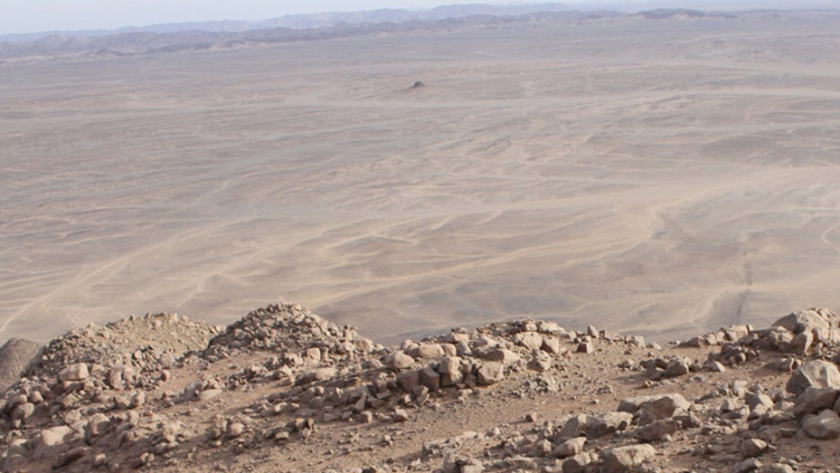Bir Tawil is the last piece of land on the planet that hasn’t been claimed by any nation and doesn’t have a governing body.
We know there are islands with people that still live in primitive ways, we know there are many developed countries, and we know of various forms of government. What can we do with a plot of land that hasn’t been claimed by any government, doesn’t seem to be desired, and is currently uninhabited? If you’re truly ready to start your own country, this is the place to go.
Where is Bir Tawil?
Before you can go to the last uninhabited place on the globe, you should know where it is. Your first thought might be that it’s in a remote area in the middle of the ocean and nearly impossible to reach. That’s not the case for this space of land. You also might think we are talking about a piece of land at one of the poles of the globe where land is scarce, and ice is plentiful, but that’s also not the case. The surprising fact about this uninhabited area of land is that it’s a small area of Africa that is not ruled by any state at all. It has no permanent residents, it’s governed by no laws, and it sits between Sudan and Egypt, which makes it a place that has certainly had plenty of people crossing it during its history, but without a government or inhabitants, we don’t know the history of Bir Tawil.
Treacherous Roads to the Land
This land that sits between Sudan and Egypt isn’t exactly easy to get to. You would have to fly into one of the neighboring countries, cross desert, rough terrain, deal with potential robberies, and potentially be killed by either the environment, animals, or criminals, and you might make it to the small area of land. If you were to try and enter through Egypt, you have to obtain permission to cross the border by the Egyptian army, which is just one more hurdle in the challenge to get to Bir Tawil.
The Forgotten Corner
When you look at Egypt and Sudan on a map, you see the small area of land in the right corner that seems to be forgotten. That is, this small area is called the Bir Tawil Triangle, even though the land is shaped like a quadrilateral and not with only three sides. You might think that one of the two bordering nations would simply claim the land and expand their borders, but that hasn’t happened yet. The area is 795.4 square miles, which sounds like a lot, but in relation to the neighboring nations, it’s not large at all. The question we should ask is why this area has not been claimed and continues to be an uninhabited plot of land in Africa?
What Caused this Area to be Unclaimed and Uninhabited?
The United Kingdom used to have a huge African empire, with much of the area around Egypt falling under British rule. In 1899, an agreement was reached between Egypt and the UK to give control of specific portions of the area to Egypt and other parts to Sudan. Three years later, the UK drew a different boundary to reflect the land used by the tribes in the area; this is where the land issues got interesting.
The area of Bir Tawil was assigned to Egypt in 1902 because it was grazing land being used by tribes that reported to the Egyptian government. At the same time, the Hala’ib Triangle, which was in the northeast, was placed under Sudan because the inhabitants of the area were culturally closer to Khartorum.
Now that there was a difference in the lines, that’s where things got very strange. Egypt claimed the borders from 1899, which would place the Hala’ib Triangle within Egypt and put Bir Tawil within Sudan. Conversely, Sudan claimed the 1902 administrative border, which puts Hala’ib in Sudan and Bir Tawil in Egypt. Neither country wanted the less valuable area, and both wanted to keep the Hala’ib Triangle. Without a basis in international law for either to claim both territories, the Bir Tawil area is left with no recognized claim or state.
Claims on this Desolate Land
Before we get to the claims on this land, you should know the climate of the area. This land is all desert and not within any reasonable distance of a water source. In fact, this small area of unclaimed land is nearly 200 km from the Red Sea, which is the nearest major water supply. This fact, and the extreme heat of the desert area, makes this area one of the most undesirable places for a government to control and cultivate.
One of the most famous claims to the land of Bir Tawil came when a Virginia father promised his daughter she could be a real princess and set out to do so. Jeremiah Heaton took the Egyptian route and planted a flag in the area to call the land the Kingdom of North Sudan, making his daughter a princess.
Other claims have been made on this land that no one wants to use. A Facebook post by an Indian man named Suyash Dixit chose to proclaim this land as the Kingdom of Dixit by posting a flag along with planting and watering a seed to show that he was going to use the land.
No Claims Recognized by the United Nations
No world organization, especially the United Nations, has taken any of the claims of Bir Tawil seriously. Most of the claims of nationhood have come in a similar fashion to Suyash Dixit while very few have been made by those that traveled from as far away as Jeremiah Heaton. Considering the fact that the local Bedouins don’t even want this stretch of land, it’s likely that Bir Tawil will continue to be uninhabited, undesired, and unused for many years to come.
This post may contain affiliate links. Meaning a commission is given should you decide to make a purchase through these links, at no cost to you. All products shown are researched and tested to give an accurate review for you.




